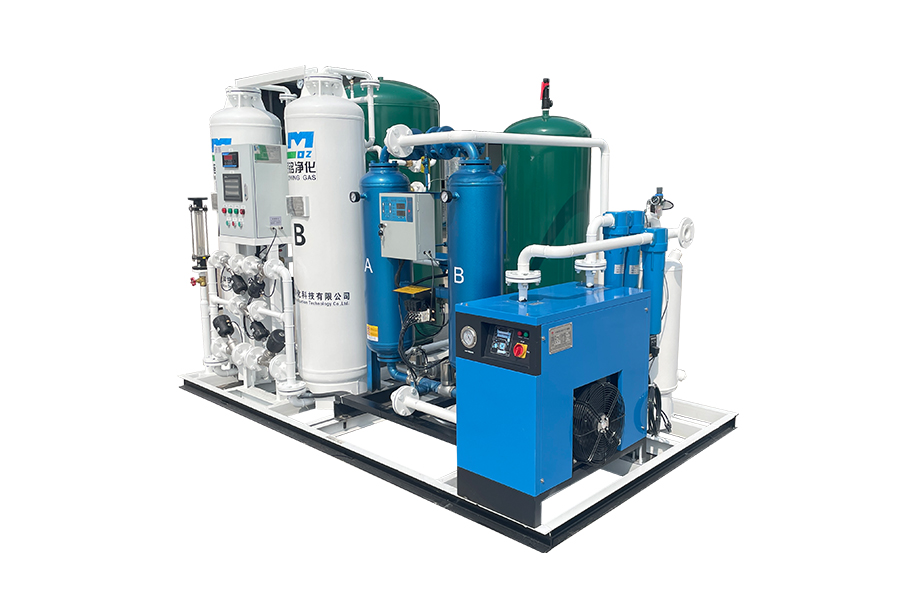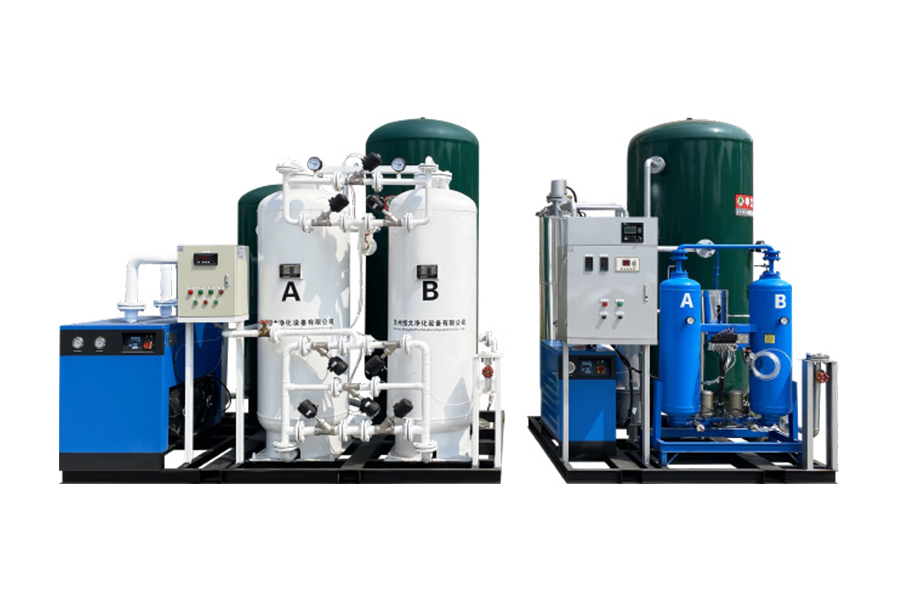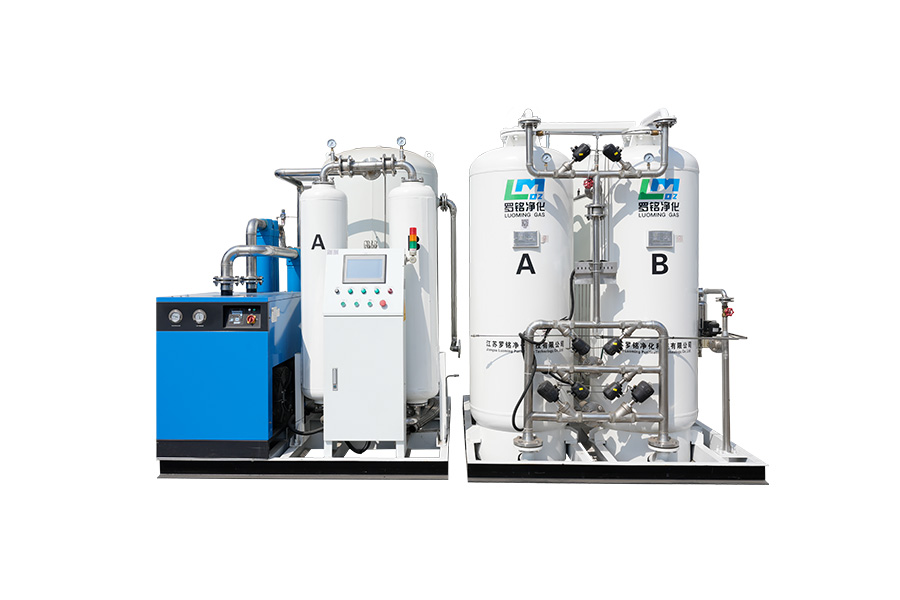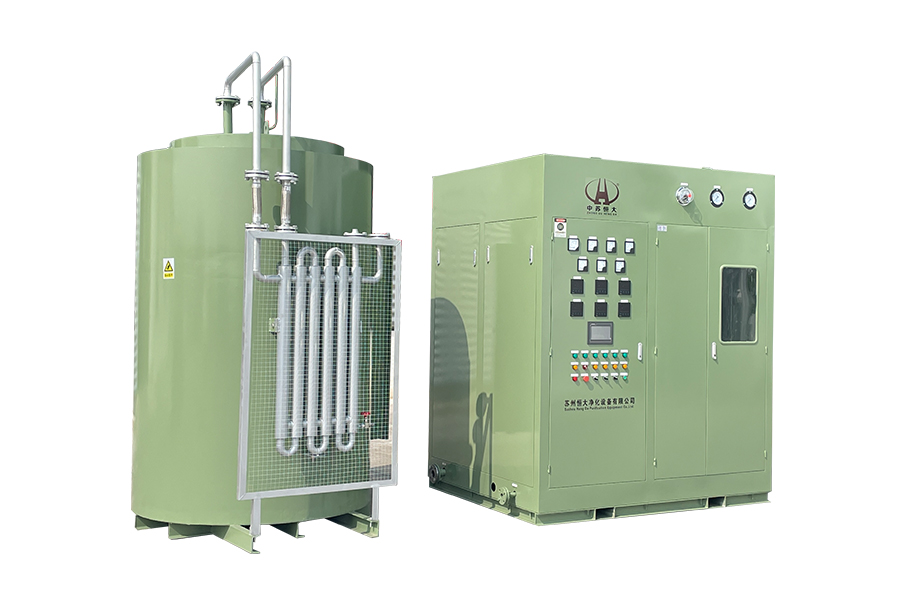When considering the integration of an on-site nitrogen generator for food packaging or pharmaceutical manufacturing, a paramount question arises: Is the gas it produces truly safe for direct contact with our products? The short, direct answer is yes, absolutely—but with critical caveats. The safety is not inherent to the generator itself, but rather to a meticulously controlled process that ensures the final gas meets stringent purity standards.
The Fundamental Principle: How Nitrogen Generators Work
To understand the safety, one must first understand the source. Ambient air is composed of approximately 78% nitrogen, 21% oxygen, and 1% other gases (including argon, CO2, water vapor, and trace environmental contaminants). A nitrogen generator does not “create” nitrogen; it separates it from the other components in the air.
The two primary technologies used are:
- Pressure Swing Adsorption (PSA): This method uses a specialized material called a Carbon Molecular Sieve (CMS). Compressed air is passed through towers containing the CMS. The sieve’s pores are designed to allow oxygen, water vapor, and other molecules to be adsorbed (stick to the surface), while nitrogen molecules pass through, resulting in a stream of high-purity nitrogen.
- Membrane Separation: This system uses thousands of hollow polymer fibers. When compressed air is fed into these fibers, gases like oxygen and water vapor permeate through the fiber walls faster than nitrogen, which is collected as the primary product stream.
In both cases, the “raw material” is the air in your facility’s environment. This is the first crucial point for safety: the quality of the intake air directly influences the quality of the output nitrogen.
The Cornerstone of Safety: Understanding Gas Purity and Grades
Not all nitrogen is created equal. The safety for direct product contact is defined by its purity and the absence of specific contaminants. The industrial and medical gas industry defines standardized purity grades:
- Industrial Grade (e.g., 99.5% pure): May contain higher levels of oxygen, moisture, and other trace gases. This is unsuitable for direct food or pharmaceutical contact.
- Food Grade: This grade is defined not just by a high nitrogen purity (typically ≥ 99.9%), but more importantly by the absence of harmful contaminants. The focus is on oil, water, particulate matter, and microbial content.
- Pharmaceutical Grade (or USP/NF): This is the most stringent standard. The United States Pharmacopeia (USP) outlines monographs for “Nitrogen NF,” defining strict limits for impurities like oxygen, carbon monoxide, carbon dioxide, and moisture. It mandates that the gas must not contain contaminants that could adversely affect the safety or efficacy of a pharmaceutical product.
A properly designed nitrogen generator system is engineered to produce gas that meets or exceeds these specific grades.

Potential Contaminants and How They Are Controlled
The perceived risk lies in potential contaminants. Let’s break down the common ones and how a well-engineered system mitigates them.
-
Oil: This is a primary concern. It can originate from the air compressor feeding the generator. The solution is a multi-stage filtration system:
- A high-efficiency coalescing filter to remove liquid oil and water.
- An activated carbon filter to remove oil vapors down to trace levels (e.g., 0.003 mg/m³).
- Using an oil-free compressor entirely eliminates this risk at the source.
-
Water Vapor (Moisture): Moisture can promote microbial growth and spoil products. The compressed air is dried using a refrigerated or desiccant air dryer before it even enters the nitrogen generator. Furthermore, both PSA and membrane technologies inherently remove a significant portion of the remaining water vapor.
-
Oxygen: While not toxic, oxygen causes oxidation and spoilage in food and degrades many pharmaceutical compounds. The entire purpose of the generator is to remove oxygen. Purity levels of 99.5% to 99.999% are achievable, ensuring oxygen content is reduced to a level that is non-detrimental to the product.
-
Microbial Contaminants (Bacteria, Viruses): Microorganisms cannot pass through a dry, intact PSA carbon molecular sieve or a membrane fiber. The final barrier is a sterile-grade particulate filter (0.2 or 0.01 micron) installed at the point of use. This filter acts as a final “sterilizing grade” barrier, removing any potential microbial or particulate contamination, ensuring the gas is aseptic.
-
Other Gases (CO, CO2, VOCs): A high-quality Carbon Molecular Sieve in a PSA system effectively adsorbs carbon monoxide and carbon dioxide. Volatile Organic Compounds (VOCs) from the ambient air are also removed by the pre-filtration stages and the generator’s core technology.
Validation and Continuous Monitoring: The Non-Negotiable Steps
Assuming your generator is safe is not enough; you must prove it. This is especially critical in pharmaceutical applications governed by strict regulatory frameworks like Good Manufacturing Practice (GMP).
- Initial Validation: After installation, the system must be validated to prove it consistently produces nitrogen that meets the required purity specification (e.g., Food Grade or USP). This involves rigorous testing by a qualified third party to analyze the gas for all critical impurities.
- Routine Monitoring: Purity is not a one-time event. Systems should be equipped with continuous oxygen and moisture analyzers that provide real-time data and alarms if purity drops below set points.
- Preventive Maintenance: The safety of the system is entirely dependent on a strict maintenance schedule. This includes regular changing of pre-filters, carbon filters, and sterile point-of-use filters, as well as servicing the compressor and air dryer according to the manufacturer’s specifications.
Application-Specific Considerations
- In Food Packaging: The goal is to displace oxygen to extend shelf life (Modified Atmosphere Packaging). Food-grade nitrogen is inert and safe for direct contact. The key is ensuring the gas is dry and oil-free to prevent off-flavors, odors, or visible contamination on the food product.
- In Pharmaceuticals: Nitrogen is used for blanketing, purging, and transferring sensitive liquids and APIs. Here, USP-grade nitrogen is mandatory. The system’s entire design—from oil-free compression to 0.2-micron sterilizing filtration—must be documented and validated to satisfy regulatory auditors from the FDA or EMA.
Conclusion: A Safe, Reliable, and Economical Choice
So, is nitrogen from a generator safe for direct contact with food or pharmaceuticals? The resounding conclusion is that it is not only safe but can be a superior choice to delivered gas cylinders when the system is:
- Correctly Specified: Designed from the start to produce the required purity grade.
- Properly Equipped: Includes comprehensive filtration and drying upstream.
- Diligently Validated: Proven through testing to meet all regulatory standards.
- Conscientiously Maintained: Kept in optimal working order through a rigorous preventative maintenance program.
The safety is not magical; it is engineered, validated, and maintained. By understanding and controlling the process, an on-site nitrogen generator provides a safe, pure, and cost-effective gas supply that reliably protects the integrity of your food and pharmaceutical products.




 English
English русский
русский Français
Français Español
Español عربى
عربى



